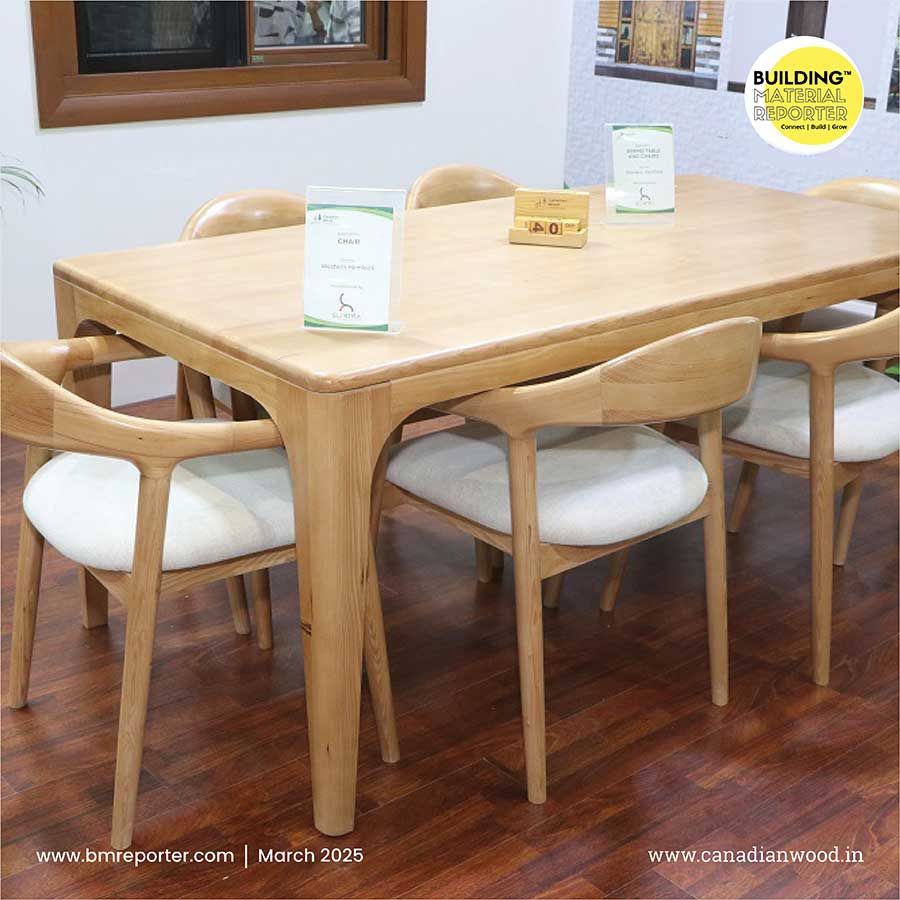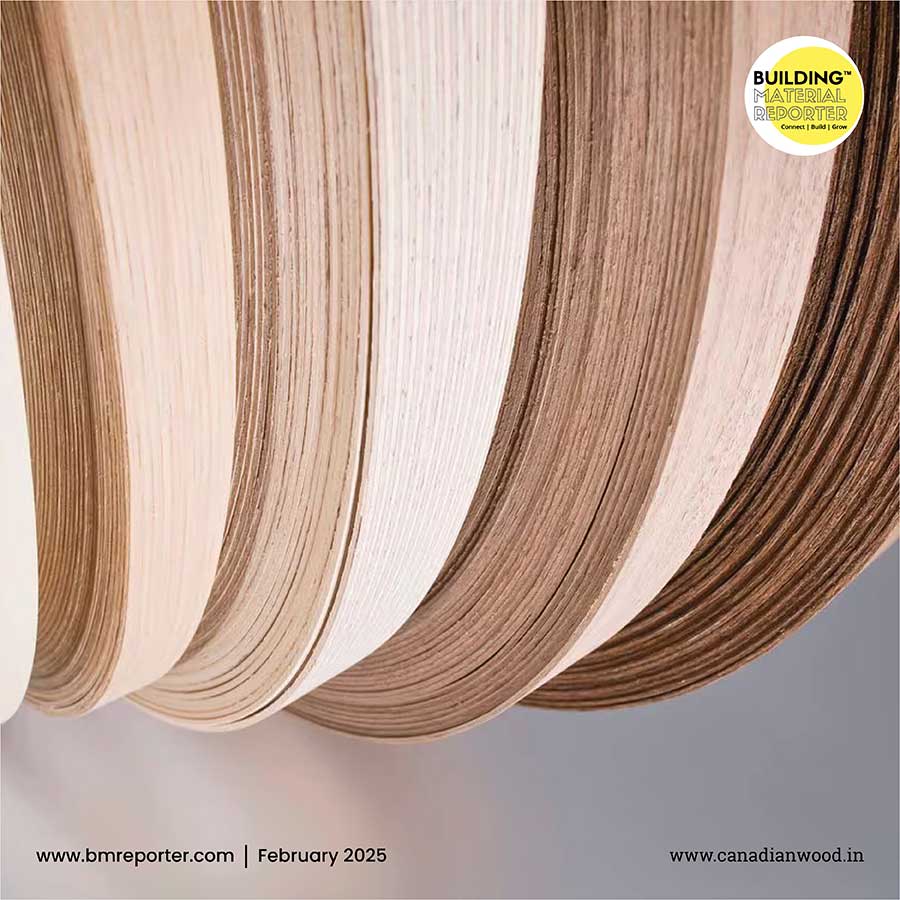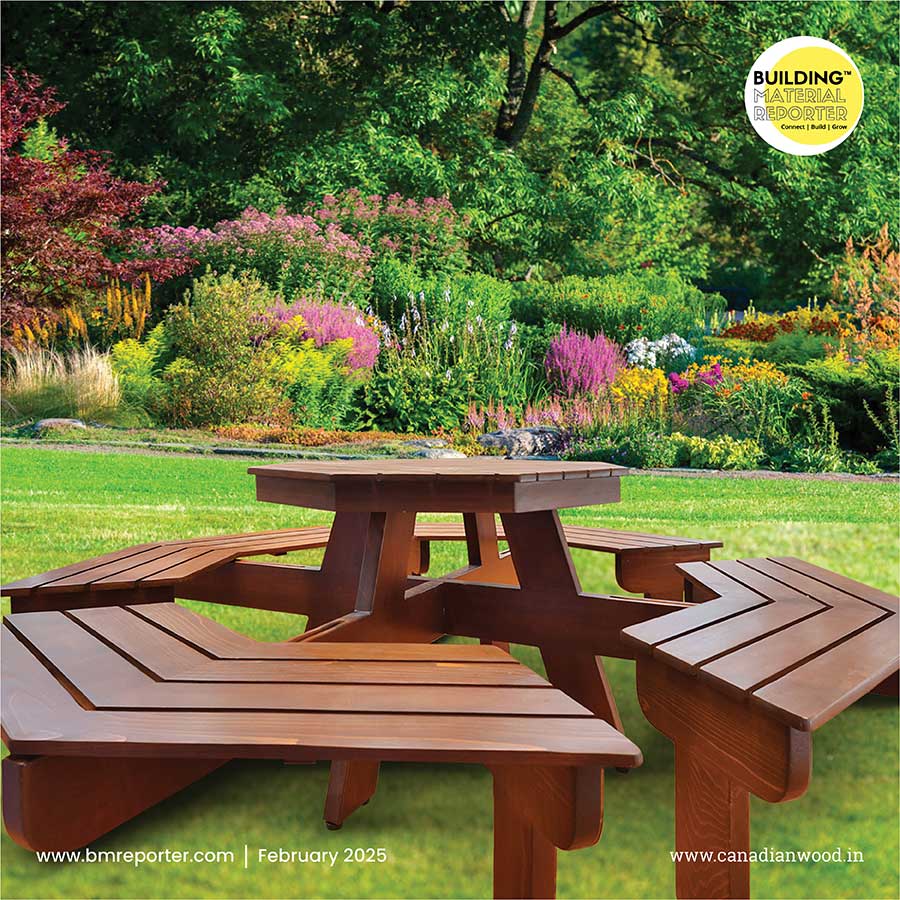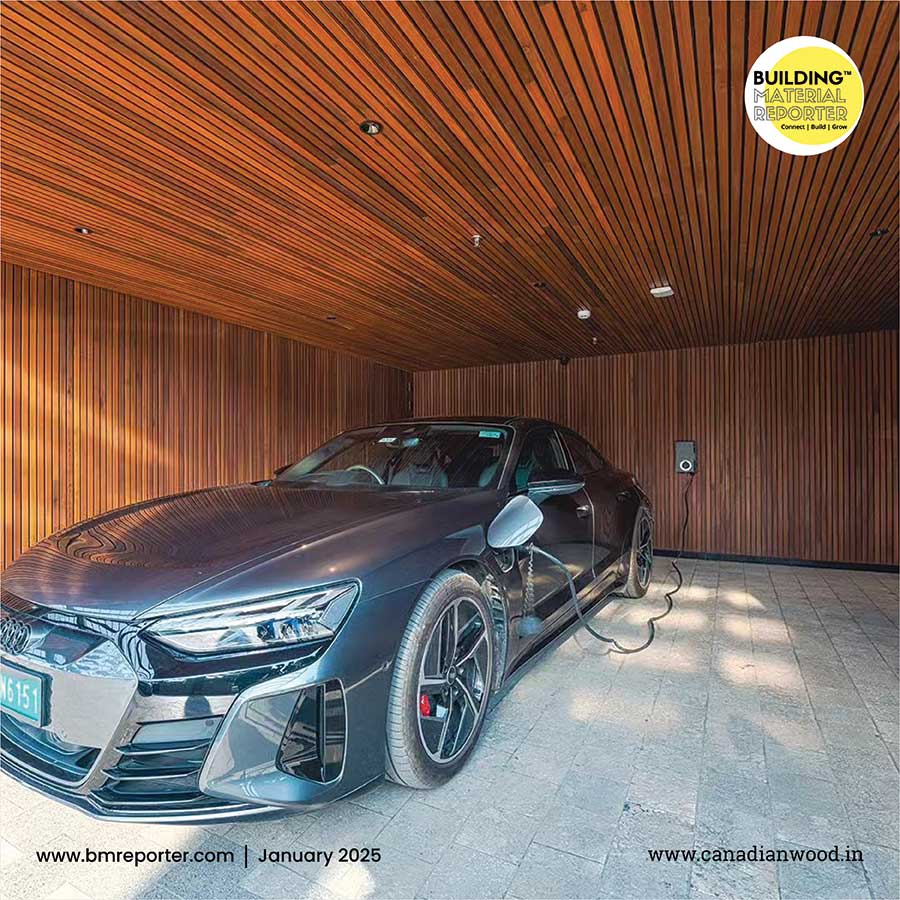Canadian Wood: Valuable & Versatile
- May 26, 2023
- By: Editorial Team
- NEWS
British Columbia’s Canadian Wood is slowly but steadily becoming one of the endearing building materials for its aesthetic values, and also for other benefits that it offers in the field of engineering and health.
The last three years have seen the world reset its lifestyle buttons in numerous ways, one of which has been a major shift to sustainable living. Driven by a need to find a balance in an increasingly urbanised world which the UN Report predicted will be 68% by 2050, consumers, irrespective of being eco-conscious or not, are seeking to bring nature home. Thus, it is easy to see why architects and real estate developers are constantly coming up with initiatives and contemporary designs that are rooted in biophilic design. This includes incorporating elements like plants and woods as well as organic use of natural lighting, ventilation and water to not only boost health and quality of life, but also cut down cost of energy.
With environmental consciousness on an all-time high and the rising emphasis on biophilic designs, Canadian Wood is taking the lead worldwide, including India, as it involves a major use of sustainable and natural materials like lumber. It’s not only sought out for aesthetics, but has proven to have engineering as well as health benefits.
Here is How the Versatility of the Canadian Wood is Giving it an Edge Over Others
Sustainability Quotient: The wood is sourced from British Columbia’s renewable and certified forests that are managed and monitored in an environmental-friendly manner and follow strict forest laws. Products manufactured from these harvested forests require little fossil fuel energy and are also known to store carbon and keep it out of the atmosphere.
Varied Offerings: Canadian Wood offers a range of wood species, which include Western Hemlock, Douglas Fir, Yellow Cedar, Western Red Cedar and Spruce-Pine-Fir (SPF). Each of it has distinct features that make it suitable for a specific application or a range of applications – from structural to furniture, door frames to artefacts.
Durable & Resilience: Timber houses and buildings score high on longevity and durability. When it comes to thermal resilience, it is known to be 400 times more resistant to heat than steel. While they've also been proven to withstand natural hazards like earthquakes, high winds and termites, the high levels of organic chemicals like extractives found in wood prevents rot and decay.
Feel-Good Factor: Apart from the soothing aesthetics it offers to the eyes, a house or office with wood décor has been reported to have a positive impact on the mind and body of its occupants. The warm ambience not only lowers stress levels, but also enhances productivity and optimism and promotes healthy emotional life. When developers take into account acoustics as wood is known to have sound-absorbing qualities, it adds even more value to the experience.
Tech-Friendly: The Canadian forest industry continues to address environmental issues through research and technology. This has helped provide solutions to issues like fibre loss during harvesting and manufacturing processes, finding a way to use energy derived from residuals like barks and sawdust and also, making timber structures fire-proof by incorporating smart fire protection technologies.
Stay updated with the latest trends and developments in architecture, design, home decor, construction technology, and building materials through Building Material Reporter.








